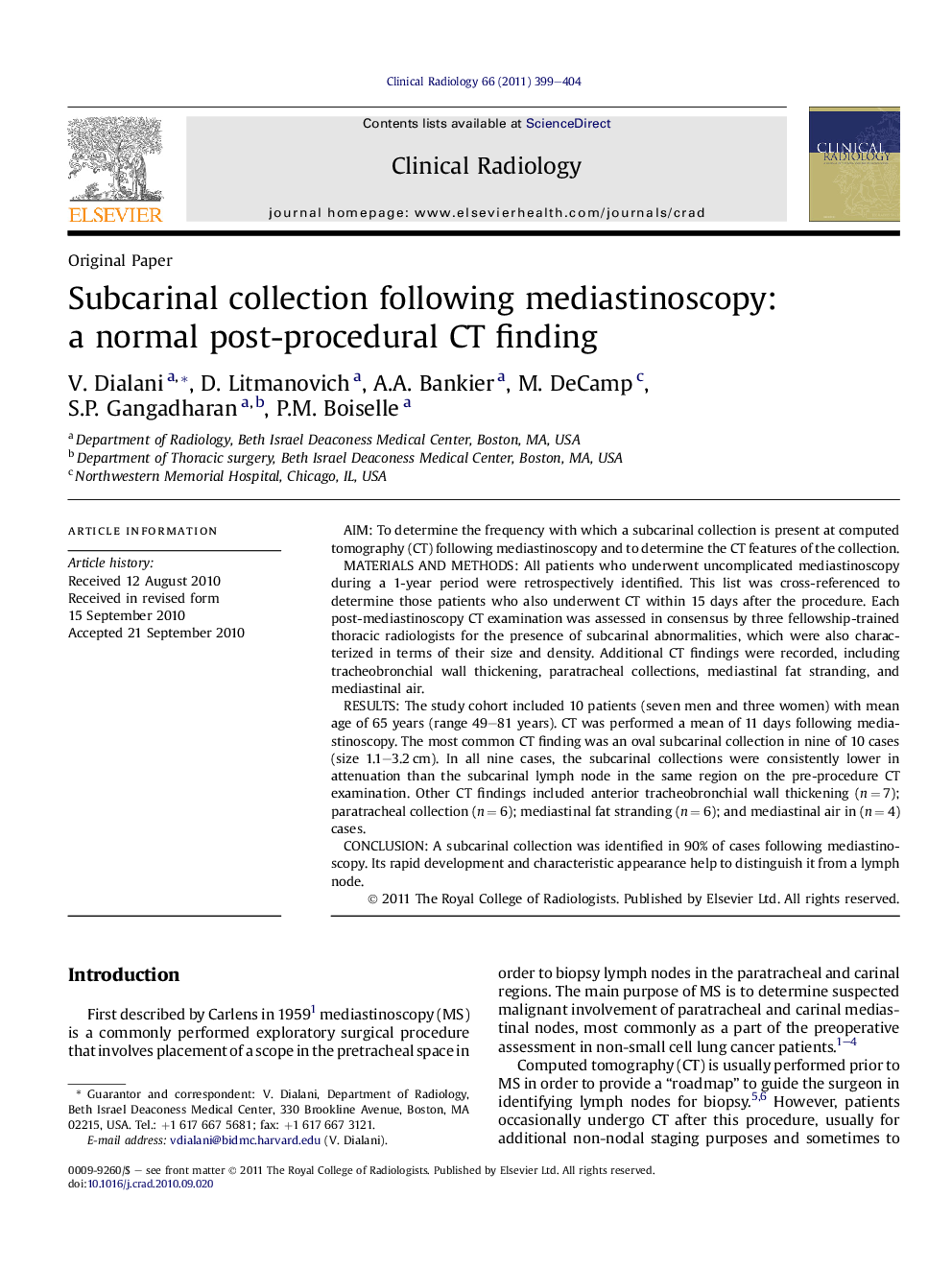| Article ID | Journal | Published Year | Pages | File Type |
|---|---|---|---|---|
| 3982069 | Clinical Radiology | 2011 | 6 Pages |
AimTo determine the frequency with which a subcarinal collection is present at computed tomography (CT) following mediastinoscopy and to determine the CT features of the collection.Materials and methodsAll patients who underwent uncomplicated mediastinoscopy during a 1-year period were retrospectively identified. This list was cross-referenced to determine those patients who also underwent CT within 15 days after the procedure. Each post-mediastinoscopy CT examination was assessed in consensus by three fellowship-trained thoracic radiologists for the presence of subcarinal abnormalities, which were also characterized in terms of their size and density. Additional CT findings were recorded, including tracheobronchial wall thickening, paratracheal collections, mediastinal fat stranding, and mediastinal air.ResultsThe study cohort included 10 patients (seven men and three women) with mean age of 65 years (range 49–81 years). CT was performed a mean of 11 days following mediastinoscopy. The most common CT finding was an oval subcarinal collection in nine of 10 cases (size 1.1–3.2 cm). In all nine cases, the subcarinal collections were consistently lower in attenuation than the subcarinal lymph node in the same region on the pre-procedure CT examination. Other CT findings included anterior tracheobronchial wall thickening (n = 7); paratracheal collection (n = 6); mediastinal fat stranding (n = 6); and mediastinal air in (n = 4) cases.ConclusionA subcarinal collection was identified in 90% of cases following mediastinoscopy. Its rapid development and characteristic appearance help to distinguish it from a lymph node.
